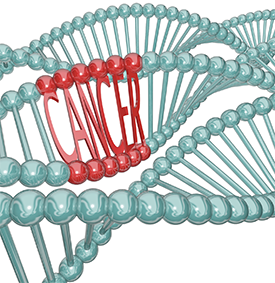
Image Credit: iQoncept/Shutterstock.com
Cancer is as old as multicellular life itself, and the biology of cancer is intertwined with human developmental biology, said Uttam Sinha, MS, MD, medical director of head and neck surgery at the Keck Medical Center at the University of Southern California (USC) in Los Angeles. Acknowledging this relationship is key to better management of the disease, Dr. Sinha said in the Joseph H. Ogura Memorial Lecture, delivered during the 118th annual meeting of the Triological Society, held as a part of the Combined Otolaryngology Sections Meeting.
Explore This Issue
June 2015Since President Nixon declared a war on cancer in 1971, cancer incidence has continued to rise; it’s predicted to be the number one killer in the world by 2020. “So we’ve got to do something today,” Dr. Sinha said. He proposed thinking about cancer treatment and management in a new way—both a bottom-up approach in which data leads to knowledge and a top-down approach in which an understanding of nature leads to data.
Cancer and Human Developmental Biology
“Carcinogenesis is an ancient property of multicellular life with a deep root,” Dr. Sinha said. It’s “widespread and pervades the entire biosphere.” Plants and sponges and fish all get tumors, he noted.
And why hasn’t evolution phased it out? “Because of embryogenesis,” he said. “Genes that are active in forming the embryo are also active in cancer.” A 2001 study, he said, found that human preimplantation embryonic cells are similar in phenotype to cancer cells and that processes that happen during the genesis of tumors are similar to processes in early development (Oncogene. 2001;20:8085-8091). “Cancer biology and developmental biology, they go hand in hand—it’s a very important concept,” Dr. Sinha said. “Unfortunately, the cancer biologists and the developmental biologists, they rarely talk to each other.”
From The Audience
“We’re getting more knowledgeable about the tiny details. I think we’re going to be using more molecular approaches in managing patients as we go forward, [which will] enable us to tailor treatment more accurately to the different kinds of cancer. For example, we have recently seen the emergence of HPV-related tumors in the head and neck area, and molecular approaches help us treat them differently than [we do for] non-HPV patients.”
—Randal Paniello, MD Washington University St. Louis, Missouri
In his lab, researchers have created a mouse model by labeling and isolating cancer stem cells, or “tumor initiating cells,” and injecting them into the mouse, which grows cancer of the mouth that metastasizes. Another example of the merging of cancer and developmental biology is the CREB-binding protein and beta-catenin complex, which is balanced out by the p300 and beta-catenin complex but increases with age and is found in high levels in cancer cells. Scientists at USC have used a blocker molecule to block a pathway and restore that balance in mice. Dr. Sinha showed pictures of two mice of the same age, one “normal” and one with cancer but with this pathway blocked, and the mouse with cancer appeared to be much healthier. “That means that blocking this pathway not only improved the cancer cure, but also it’s not specific, so it also worked in normal stem cells,” helping the mouse to age better, he said.
Energy Flow
Dr. Sinha also discussed the importance of “energy” in the beginnings of disease. Through a phenomenon known as “quantum entanglement,” normal energy disruptions can bring about errant hydrogen atom positioning in DNA, causing mutations that lead to disease, he said. In other words, he said that the importance of “energy flow”—known as the “life force” of Qi in Chinese and Prana in Sanskrit —should not be overlooked.